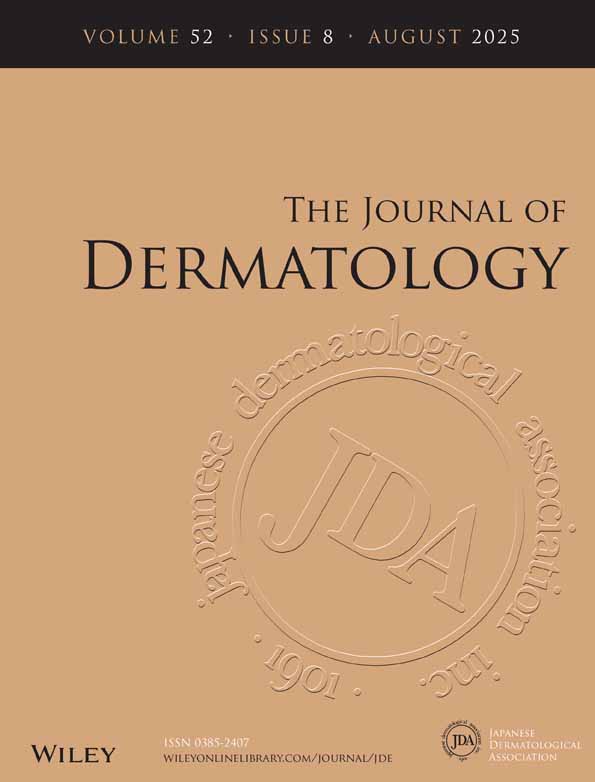Monitoring of ELISA for Anti-BP180 Antibodies: Clinical and Therapeutic Analysis of Steroid-Treated Patients with Bullous Pemphigoid
Abstract
We studied the precise correlation between ELISA values for BP180 NC16A and the alternations of disease activity in 5 patients with bullous pemphigoid (BP) during various treatments and tried to answer the question of how we can use ELISA to determine the timing of prednisolone (PSL) tapering. Disease activity in some patients with BP, but not in all, was poorly correlated with ELISA values in short-term follow-up. However, all patients showed a good correlation of disease activity with ELISA values as a whole in long-term follow-up. Three patients with typical BP showed rapid and good responses to PSL for erosion and blister formation. Their ELISA values gradually decreased to 40% of initial values during PSL therapy after four weeks. Two patients with the vesicular type of BP did not show rapid and good responses to PSL for erosion and blister formation. In the cases with the vesicular type of BP, diaphenylsulfone in addition to PSL dramatically improved the clinical symptoms including erosion and blister formation, even though the ELISA values were as high as those before treatment. Relapses did not occur with the tapering of PSL dosage when the ELISA values decreased to 40% of initial values, although they were still not within the normal range.




